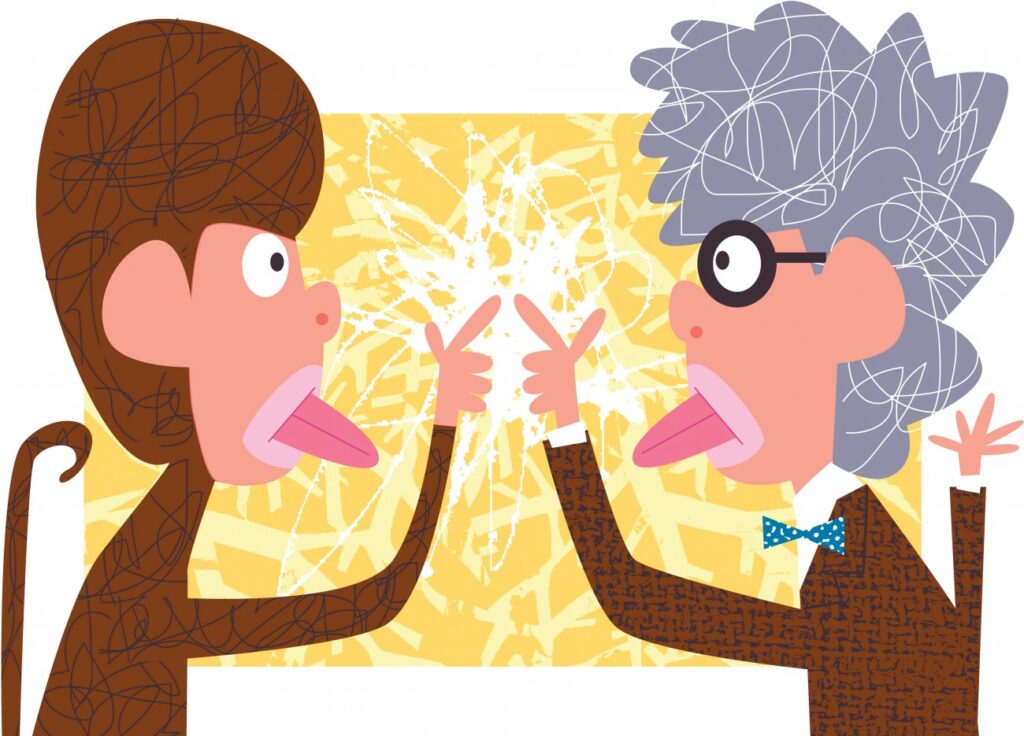
Early this month, I tuned into an online conference by accident. It was organized by the management of the Harvard Business Review Chinese Edition in Beijing. The event was called “New Growth Summit 2021.” I was pleased to hear ESG was mentioned at the event. The acronym ESG stands for Environmental, Social and Governance. China has a bad name for producing shoddy goods. Quantity outweighs quality. So, for me to hear ESG at an event that targeted Chinese entrepreneurs, investors and executives, I was delighted, especially since the organizer has affiliation with the top-notch management publication in the US. Isn’t this a positive example of “Monkey See, Monkey Do”?
China is one of the key playgrounds for the digitalization of manufacturing. This realm is a locomotive of business-to-business (B2B), that is, companies create products and services geared toward other businesses. Ordinary consumers are not familiar with these manufacturing companies and yet they are integral part of the complex global supply chains. If you are an open-minded and collaborative global citizen, artist, scientist, engineer and business professional, you might find the 1958 essay “I, Pencil” by Leonard Read illuminating. In the first person narrative, the pencil details the complexity of its own creation, listing its components and the numerous people involved. This is my understanding of the supply chain long before we entered the Digital Age. Today’s suppliers come from all over the world. They can compare, emulate, and exchange experience in cyberspace. Digital technology could be a game changer to increase transparency and accountability in Environmental, Social, and Governance (ESG) for a company’s operations.
The application of ESG is not only limited to companies and investors. Governments and nonprofits have their roles to play as well. Monkey see, monkey do. If we support healthy and healthful competition, sharing experiences and incorporating success stories into feasible operations, they will scale up the positive impact of ESG. On the contrary, refusing to emulate and embellish best practices of ESG will reduce the competitiveness of the actor.
One of my biggest puzzles is why a majority of Americans do not favor efficient and affordable public transportation. They might be more willing to buy a futuristic self-driving car than having a licensed human driver drive them in a bus or a train. What’s the difference? None. The passenger is being driven to the destination in either option. If you agree that travel broadens the mind, which do you find more interesting to interact with on the journey—other human beings or multiple cameras and computers in the vehicle?
In my view, it’s not a bad idea to establish small-scale public transportation services in small towns and villages, too. Not everyone can afford expensive housing and benefit urban conveniences in cities, especially the poor and physically disadvantaged. Running a bus route on schedule and giving the bus regular maintenance, these are job opportunities to keep steady population in rural and suburban areas. As older Americans are one of the fastest-growing demographics in the country, medical appointment transportation in rural areas will be as necessary as school buses for schoolchildren. Obviously, the Smart City project that has been initiated in many American towns and cities focuses more on the technologies, including free WiFi and Internet-of-Things (IoT) sensor equipment than the building of mass transit services. If you look to the emerging markets in Asia and Africa, they may not have many good roads yet. But the roadmap of an affordable and safe mass transportation network is in their urban planning. If you are a video game player, you might be happy to see a new settlement that you build will attract more people if your city has high quality sustainable infrastructure, including a forward-thinking mass transit system that can handle future growing population. Time tells.
Monkey see, monkey do. What if the U.S. is a stubborn monkey to feel good about itself and refuse to learn from others?
The pandemic has changed our way of transportation, partly resulting from the flexibility of working location at some jobs. But teleworking should not be a hindrance to building and expanding good quality roads, bridges and railways. Besides walking and biking, it is a no-brainer that mass transit and sharing rides are the eco-friendly way to get us from point A to point B. Many Asian countries are spending money on public transportation systems. By the end of 2020, the operational length of the high-speed rail in China reached just under 38,000 kilometers (24,000 miles) in total, close to the circumference of the Earth at the equator. In this regard, the cross-state and cross-municipality railroad systems in the U.S. are even poorer than countries like the United Kingdom and France.
In America, the more roads we build, the less enticed people are to give up driving. But the efficiency of highways fluctuates due to many factors. For example, as population grows in and near cities where jobs are, new roads will be jammed eventually. Not to mention how much carbon emissions are released during a gridlock on the highway. On the contrary, the more often and the more people use public transportation, the more profitable the bus and train companies will become. As a result, the better quality and services the systems have. This is a reinforcing feedback loop. If the Downs-Thomson Paradox is fully examined and considered by transportation authorities at local and federal level of governments, perhaps the multibillion-dollar road expansion project that is underway outside the national capital in Northern Virginia would be replaced by a sophisticated, well-integrated network of railroads and buses.
The Downs-Thomson Paradox states that improvements in the road network will not reduce traffic congestion. Improvements in the road network can make congestion worse if improvements make public transport more inconvenient or if it shifts investment. Generally speaking, during peak hours there are more cars—no matter whether they are electric vehicles or not—on the road. They will generate more carbon emissions in total than in the off peak hour. But more highway lanes encourage more cars on the road at any given time of the day. In other words, increasing highway capacity means increasing carbon emissions. If more companies in the region provide shuttle service for their employees, that might help improve their ESG performance.
As a consumer who is dumber than my gadgets, I cannot stop learning every day in order to figure out changes in my life. Monkey see, monkey do. As I said in the previous essay, while we are training artificial intelligence (AI) to conduct deep learning about humans, aren’t we also analyzing and unpacking AI’s smarter-than-me brainwork? I’m not surprised that in the near future I will be forced to replace my IoT to apply blockchain technology, an ambitious application to decentralize the heavily regulated power industry. In classical music, a computer with artificial intelligence completed Beethoven’s unfinished Tenth Symphony. Have you heard of organ-on-a-chip technology? The technology replicates human biology and predicts human response. This is a new model for drug research. Are you ready for AI-based algorithms to learn about your health problem?
Monkey see, monkey do. If you are not satisfied with what has been reported in the mainstream media, you may want to look at your local news outlets and foreign press. While I read news releases about China from US organizations and government, I also seek a second opinion from non-US sources. We are in a fragmented world of information amplified by misinformation and mistrust. In the name of national security, any information could be a target to be censored and screened regardless of political ideology. If art and science, sports and Olympian spirits cannot unite the world, what else can? Everything is relative and interdependent. There is no absolute freedom, nor absolute power. Keep an open mind and an adventurous heart to learn from others, I say to myself. Am I learning to enhance my ESG performance as a responsible consumer? Yes. Swell! I am willing to be a curious monkey to do and see and learn from AI.
